During NATO exercise Swift Response held in Estonia, paratroopers from 3rd Battalion The Parachute Regiment Battlegroup (3 PARA BG) demonstrated their formidable capabilities.
The exercise involved over 2,300 personnel from four countries.
The event forms part of Steadfast Defender 24, NATO’s most extensive military exercise since the Cold War, engaging approximately 90,000 troops from all 32 NATO allies. According to a press release, the exercise tested the paratroopers’ skills in a 48-hour live fire mission aimed at clearing and holding a three-kilometer-long trench system.
Troops were inserted by Chinook helicopters under the cover of darkness and began their assault at dawn, facing a simulated enemy that used drones for surveillance. The paratroopers used their own drones to advance through the enemy fortifications effectively.
Supporting the ground forces were Typhoon fighter jets, Apache AH-64E attack helicopters, and artillery, which provided crucial cover and engagement capabilities. “The combined arms approach, involving ground troops, air support, and artillery, ensured a robust offensive capable of overcoming enemy strongpoints,” stated a press release.
Private Matt Hames, a General Purpose Machine Gunner (GPMG) with 3 PARA, was quoted in the press release as saying, “In the trenches, it’s very cramped, the front line is only a few soldiers wide, and you’ve just got to be extra switched on. I’m providing firepower to keep the enemy’s heads down and protect my mates. We all know our roles and each other, and it’s the team that sees you through.”
The exercise also involved critical support tasks such as evacuating simulated casualties and managing the resupply of ammunition. In addition to combat roles, 23 Parachute Engineer Regiment (23 Para Engr Regt) was responsible for creating natural fortifications and clearing pathways by removing obstacles like barbed wire and mines.
Air support coordination was handled by 7 Para RHA’s Joint Terminal Attack Controllers (JTAC), who, as described by Warrant Officer Class Two Adam Colvin, performed “air traffic control with high explosives,” making strategic decisions that directly impacted the battlefield dynamics.
Lieutenant Colonel Dave Mans, the commanding officer of 3 PARA BG, praised the realistic and challenging nature of the exercise.
“The more we do at this scale and complexity, the better prepared we are for any environment. Training builds relationships, we learn how we react under pressure, and understand what our capabilities are to make the battlegroup as effective as possible, whatever it is asked to do.”


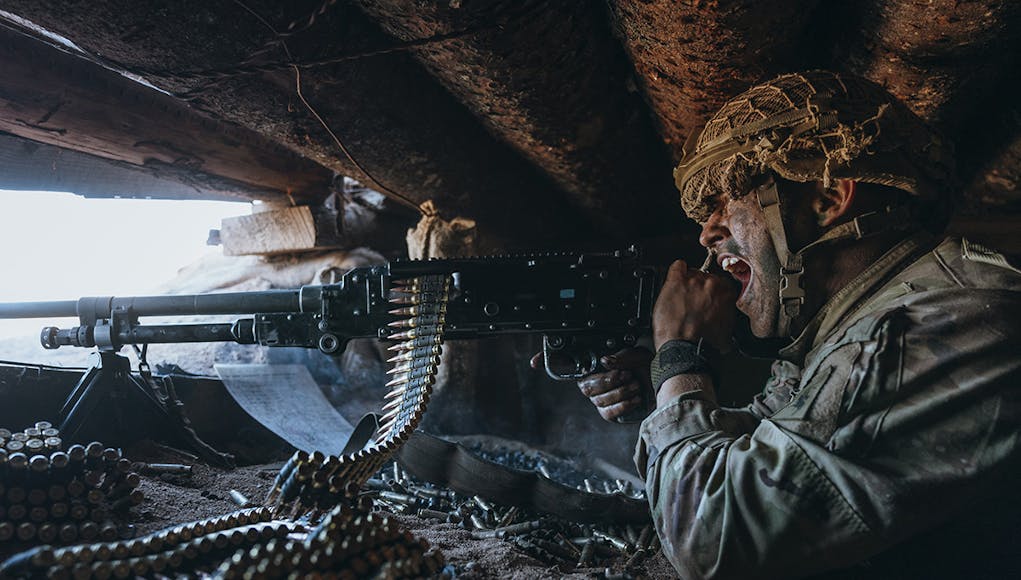
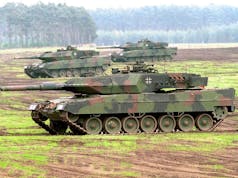



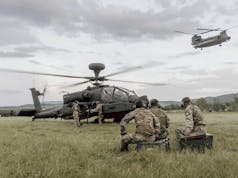

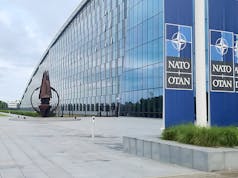
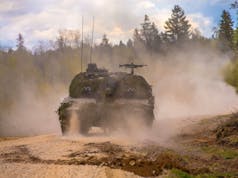

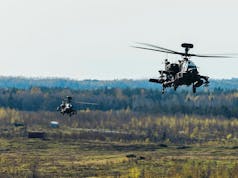

Curious, under what tactical conditions/circumstances would the Paras conduct an actual parachute jump, and, is the A-400 fully certified/capable of supporting that mission? Alternatively, would UK request support from a NATO ally still equipped w/ C-130s, for such a mission? 🤔
Good points sir but it’s really just a display of force to let the Russians know we are ready.
Understand, demonstrations serve a useful purpose. 👍
I believe the A-400 achieved full certification in April this year with low level jumps being added to high level certification.
Thanks for the update. 😊👍
Well actually seeing real time footage of paratroops deployed in Ukraine by Russia a couple of years ago ….. I’d say that this sort of action would be pretty obsolete now….. and moving on, I’d be very surprised if Boot’s on the Ground would be able to repel the constant barrage of drones …….. Seriously, this War has completely changed the way that we have been training for…….. Just check out Youtube and see the devastation Drones are having on Armour, Infantry and Ships…… Just who the hell would want to be in a Trench,Tank, APC or Ship in this modern age of warfare is way beyond me….
I was reading the article and it states drone surveillance and not constant bombardment of artillery and fpv drones. They appear to still be training on scenarios that existed before the war and not since.
Russia didn’t do a para drop instead it was an airborne assault in which troops were taken to Hostomel by helicopter rather than jumping off a plane
They had planned to fly 18 II-76s from Belerus airspace as soon as Hostomel was secured by the initial helo air assault, This failed and they turned around RTB
Yep that was to bring heavier equipment in
Pretty much under the same conditions that the US 82nd would conduct an actual Parachute jump: When enemy Air defence is suppressed, we have air superiority, and the ability for land forces to catch up with them is assured.
So in very few cases all things considered.
A-400 is capable of deploying parachute drops, Britain, France and Germany all use them as their primary platform now I think.
I can it being more used for a reinforcement/ supply purposes. Dropping in artillery pieces and ammo/rations, but even that would be dangeous as the a400m is prettt slow.
A mass troop drop would only really be used in advance of the enemy, so at the start of the conflict when there is a need to get defensive lines set fast, or when reinforcing existing lines ahead of an enemy attack.
With manads being common, a drop on or near an enemy position would also be dangerous as you risk not only the plane but all the troops and gear.
Same issues with supply and reinforcement. You need to fly low (but not too low) and slow to drop anything by Parachute. It’s not an issue with the A400 it’s a basic fact of dropping anything by parachute. A2/AD needs to be suppressed before you can even think about it, even behind your own lines.
In a modern battlefield, against a peer or near peer, your never going to fully suppress them, it’s unrealistic. You can control the air itself but can’t fully take out ground based air defences.
Sure you can. Look at the coalition on Iraq (and yes Iraq was considered a peer adversary at the time). Fast air flying with HARM style missiles means as soon as any radar for a SAM site starts up you shut it down. It most definitely can be done, it’s just not easy, and most probably would require the USAF (or a hypothetical centrally organised EUAF) to accomplish.
Iraq was never considered a peer. Its equipment was 20-30 years out dated and not properly maintained after the collapse of the soviet Union. Also that was 30 years ago.
Harm missiles etc are only good against semi static radars, almost zero use against a manpad. Manpad aren’t great against fighters flying high and fast but a transport plane doing a drop has neither advantage.
Yeah sure, the 4th largest army in the world wasn’t considered a peer, I suggest you go back to the Gulf War and check, and yes it was 30 years ago, but the principle still remains.
News flash: Stinger entered service in the 1960’s. So the fact that we managed to suppress them in the both gulf wars is actually very relevant.
A big army doesn’t make it a peer. Also iraq only had a very small supply of stingers which were supplied to it a decade earlier during its war with Iran. World has changed a lot since then.
Steve, how would you define a peer opponent then?
Someone that matches you from a military level taking account firepower, training and tech. Iraq was never a match for the US in any of them and for sure not a match for the combined allied forces.
If it was purely the UK vs Iraq then yes, but it wasn’t.
Iraq matched the allies in a raw numbers perspective but its gear was massively outdated and its forces were poorly trained outside a few core units.
Tech wise the US was decades in front, even just sat nav made a huge difference.
Iraq matched the allies in a raw numbers perspective but its gear was massively outdated and its forces were poorly trained outside a few core units.
Tech wise the US was decades in front, even just gps made a huge difference.
That is quite proscriptive and would prevent many major opponents today being defined as peer or even near-peer.
Given the present state of the Russian Army in Ukraine (poorly led, poorly trained, poor morale, much old equipment, poor tactical handling of forces, fragile engineering support, high losses in manpower and materiel), then I doubt you would describe it as a peer or near-peer opponent for the US or NATO.
But that doesn’t get us very far in figuring out how to face off against them. You certainly would not wish to be persuaded into conducting assymetric warfare. If they are not peer, they must be an assymetric opponent?
It’s not an easy question to answer though. If you go back 3 years would anyone have considered Ukraine a peer to Russia, I highly doubt it and they realistically weren’t at the time. The in flood of higher tech nato gear helped balance the scales. Plus Russia early logistic failures.
Tactic and training wise though they are roughly the same, as if you look at the Ukraine spring offensive their approach and failure was down to following the same play book as Russia and bad training. Their only balancing factor has been a change in warfare to drones and artillery focus away from traditional tank rushes.
(Worth noting that in 1990 nobody thought that Iraq wasn’t a peer opponent, it wasn’t until after the Coalition whiped the floor that this “Iraq wasn’t a peer threat” narrative grew.
I remember that time and those changing thoughts.
Some now do not consider Russia to be a peer threat either as they were not able to defeat Ukraine in a few days or weeks, or because they have still not conquered the entirety of their 4 self-nominated ‘new Russian territories’ .
I consider anyone to be a peer opponent if the conduct of warfare against them is not and cannot be assymetric.
Also stingers would be useless against modern jets as by the time the soldier is aware the jet is incoming and reached for his launcher it would have already dropped its bombs and be on its way. Helicopters would be a different topic, as the Russian airforce has found.
Mass insertion by parachute is unlikely, but small units for specific ops at night it remains a capability we should retain. Air Assault by helicopter is however likely to remain tactically useful.
Yes, or direct from Atlas. The RGR Bn and 1 RI can do the Air Assault side. So can the Para Bns if need be.
Bde level para drop long gone.
Along with Cmdo Bde assault. The very best brigades lost. At what point is it criminal?
David, I agree. I’d like both at Bde level. And to be fair, 16 Air Assault is, it has it’s components intact, restored. It is not lost
At all. It could do with more firepower and some integral armour, as it once had.
What it lacks is aircraft to enable a larger sized para drop, as this is at Lead AA Company Group level only now ( I think, A rarely comments now to confirm )
Does it actually need to be higher? When did we last drop a Bde, Suez?
I’d place rapid AA via heli or direct onto an airfield via fixed wing as equally valid.
On Royal, again I’d like to see it as it was. Some serving or ex RM have posted before explaining why the Corps is going down the route it has. Who am I to say otherwise, with their first hand knowledge? It is just a personnel preference I have.
I presume the increase range of the future Chinook’s will be a big boost to 16 Air Assault Brigade.
Maybe. I see them primarily for UKSF and for use from the QECs.
Are right! Ta
We did not drop a bde by parachute at Suez – it was a battalion – 3PARA –
“3 PARA conducted the first and last battalion parachute assault since the War when it attacked El Gamil airfield west of Port Said on 5th November 1956, during the Suez Crisis. The drop was conducted under fire and the assault and reduction of the Egyptian coastal defences before the amphibious landings cost the Battalion four killed and three officers and 29 men wounded”.
Last time we dropped a Formation – was 6 AB Div, Arnhem, 1944!
I am also struggling to remember the last operational battalion or even company para drop since Suez!
SAS Sqn in Afghan.
Thanks mate.
A400M fully cleared now for all types of para drops. Took us a long time (the French got there first) but we got there in the end. Last time I had any intel on this no para drops were regularly envisaged except in exceptional circumstances. Insertion more preferable to para drop. SF are the only guys jumping regularly these days
3PARA were nearly given the go ahead last year to jump into Sudan and secure a second airfield during the evacuation of British nationals, Operation was scrubbed in the last couple hours
https://web.archive.org/web/20240404213326/https://www.telegraph.co.uk/news/2023/05/13/rishi-sunak-paratooper-drop-sudan/
3PARA were nearly given the go ahead last year to jump into Sudan and secure a second airfield during the evacuation of British nationals, Operation was scrubbed in the last couple hours.
Telegraph reported it but seems I cannot post the link
Thanks. In all the user briefings conducted by the RAF SRO when we were bringing the A400M into service at Brize, the requirement was there but all the talk was that the army doesn’t jump anymore except in exceptional circumstances, stand fast the SF community. Too dangerous apparently and operationally questionable. You tell me, I’m a civilian, what do I know 🤷🏻♂️
Interesting. The dangerous thing to me is the assumption (by senior RAF officers??) that during the 30-odd year life of the A400M that it would never be used for a para drop.
No, I don’t think that’s the assumption. The assumption seemed to be that the army would not perform jumps as a regular war fighting doctrine but rather as a last resort if all other options were closed to them. I mean, in the original set of user requirements there was still one for a 14 ship formation jump (that would be 1,400+ jumpers!) . The SRO leading the discussions stated that would never happen nowadays. I believe that to be the case although smaller occasional jumps I’m sure will take place, especially SF
Many thanks to have the definitive answer. I doubt we have 1,400+ trained and currently qualified jumpers in the army! But good to know the Requirment is there in black and white.
Very interesting – I had missed this story. Maybe my link will work?
https://www.telegraph.co.uk/news/2023/05/13/rishi-sunak-paratooper-drop-sudan/
Interesting that some members of 4PARA (an Army Reserve unit) were moved to Cyprus to jump and augment 3PARA.
Look, I was never in the army. I’m no expert. I’m only relaying what was discussed at programme review meetings to bring the aircraft into service. I mean the requirements are still there and Airbus had to sweat blood and spend millions of its own money to meet all of them and it’s only recently that the plane has received full RAF clearance for all types of jumps. So I’m not saying it will never happen, just that I think it’s probably an operation of last resort these days, performed only if other options are not available and on a regular basis only by SF
Understood. Thanks for passing on the info you picked up. Very informative to us all.
Tactical Airborne assault improbable and impractical. It’s trench warfare and urban ops. Drones playing a big part. Dogged drawn out stuff. I guess. The Russians will start to use breve agents so all of this beard stuff in UK armed forces may be short lived
Not every future war will be like that in Ukraine. They never are.